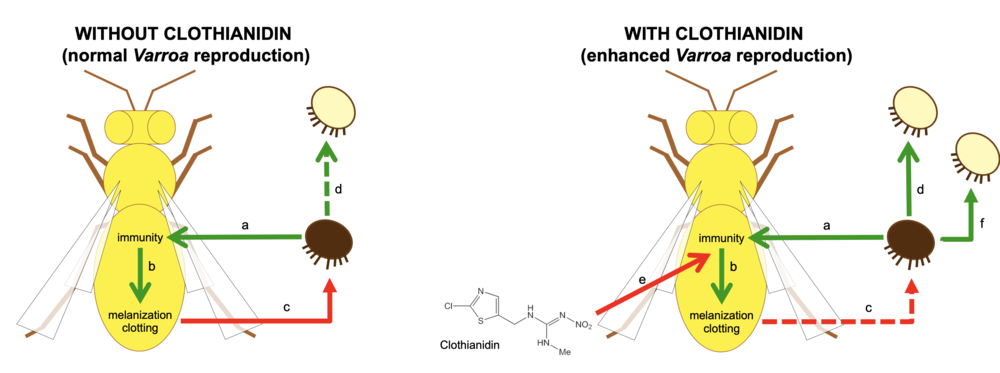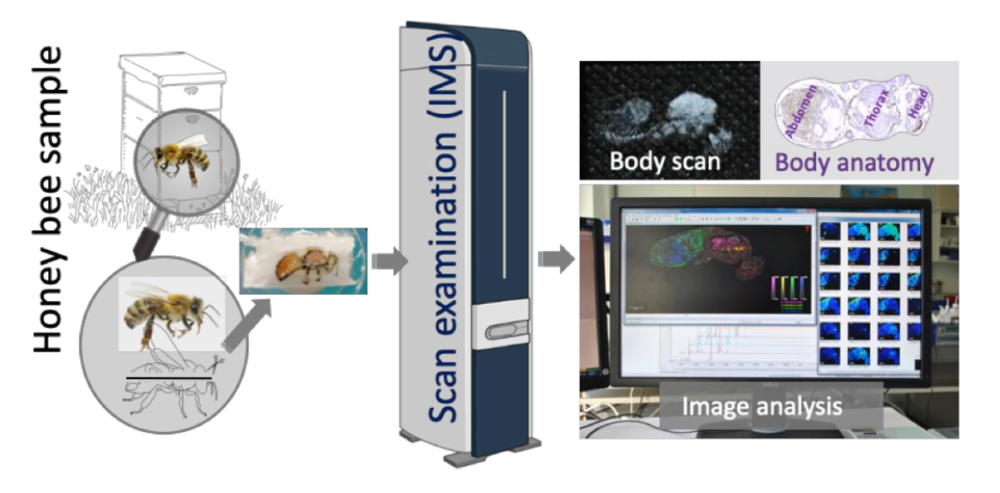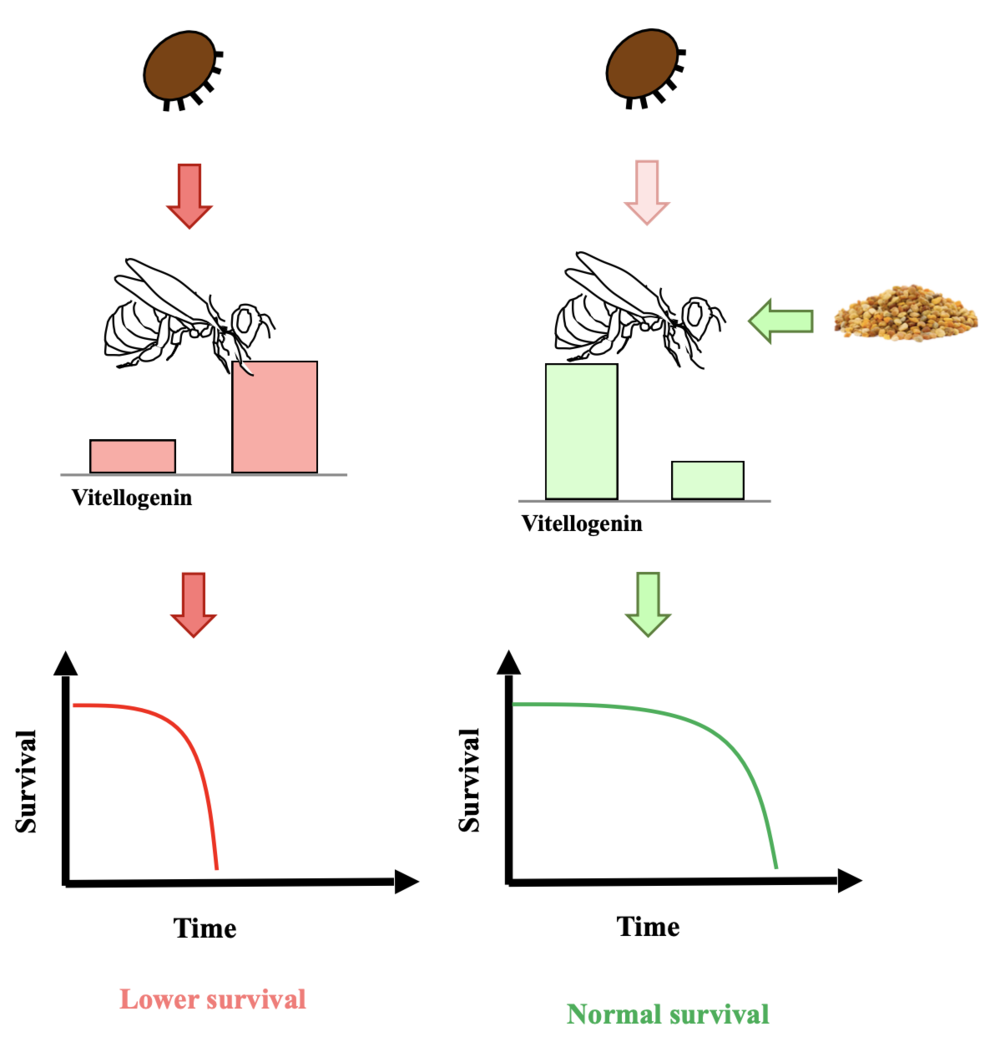pan-european assessment, monitoring, and mitigation of stressors on the health of bees
A recap of PoshBee’s fast-growing collection of stakeholder summaries
In January 2022, the PoshBee project committed to providing stakeholder summaries for all high-impact original research and meta analyses. Seven months later, the project has already published 13 such summaries, 11 of which are available in languages other than English (French, Italian, German, etc.). Find out more about PoshBee’s stakeholder summaries below.
Pollen nutrition fosters honeybee tolerance to pesticides (in English and French)
PoshBee’s first summary answers the question: can variation in pollen diet quality affect the sensitivity of honeybees to pesticides? It demonstrates that sulfoxaflor reduced honey bees’ survival, but less so when they were able to consume pollen.
A single dose, but long-term effect: the case of the neurotoxic sulfoxaflor in honeybees (in English and French)
The second summary deals with the question: can a single dose of pesticide cause long-lasting or delayed effects? Researchers observed no effect of sulfoxaflor doses on bees’ mortality, but a significant decrease in their foraging activity appeared one week after the exposure to sulfoxaflor.
An integrated system for field studies on honey bees (in English)
Тhis stakeholder summary proposes an integrated system of research equipment which enables the creation and management of small viable honeybee colonies. Each part of the system is designed and built in a coordinated fashion to improve speed, ease, reliability and accuracy.
Flowering hedges and edges support pollinating insects throughout the season (in English and Italian)
The fourth PoshBee stakeholder summary examines the relationship between the number and types of flowers in the hedges and edges of apples and oilseed rape, and the number of bees, butterflies and hoverflies. It investigates how this relationship changes throughout the season. Overall, the study supports policies that improve natural habitats in agricultural landscapes in order to protect pollinating insects.
The insecticide Clothianidin increases Varroa destructor fertility, with negative implications for honey bee health (in English and Italian)
The next summary in the collection deals with the effects of the insecticide Clothianidin on the parasitic mite Varroa destructor and how these effects impact honey bee health. The mite feeds on the bee’s haemolymph "blood" through a feeding hole. The honeybee’s immune system reacts by activating processes which promote wound healing, and limit mite feeding and reproduction. However, the neonicotinoid Clothianidin impairs immunity and response to Varroa feeding. Additionally, it increases the Varroa destructor fertility.

The insecticide Clothianidin increases Varroa destructor fertility, with negative implications for honey bee health.
Bee Tracker – an open-source machine-learning based video analysis software for the assessment of nesting and foraging performance of cavity-nesting solitary bees (in English and German)
This stakeholder summary presents a novel software package for the automated analysis of the foraging and nesting behaviour of numerous cavity-nesting solitary bees. The software is called Bee Tracker and it is based on video recordings of nesting units. It can identify the nest of each individual bee, which enables the measurement of individual-based measures of reproductive success. Moreover, the software can quantify nest recognition and flight duration.
A new frontier for visualising the impact of stressors in honey bees: proteins in pictures (in English and French)
This summary presents the unique technique of IMS, which bridges the gap between visual examination and targeted molecular analyses. Imaging mass spectrometry (IMS) provides unique opportunities for analysing tissues, organs, and even whole organisms at an unprecedented level of detail. Researchers have adapted IMS for use in honey bees, enabling them to produce images of drugs/chemicals, metabolites, sugars, lipids (fats) and protein distributions across organs.

Imaging mass spectrometry use with honey bee samples.
Novel insecticide reduces egg-laying and reproductive success in bumble bees (in English)
Sulfoxaflor, a novel insecticide, was introduced to replace neonicotinoid pesticides in agricultural systems. To test its potential impacts on bumble bee health, researchers conducted two experiments, which showed a risk to bumble bee health if exposed to low doses of sulfoxaflor, with egg-laying and colony reproduction both being reduced.
How does an insecticide seed-treatment affect honeybee and bumblebee colonies and their pathogens, parasites and beneficial bacteria? (in English and German)
Besides direct effects on bees, exposure to neonicotinoids might promote pathogens and parasites of bees as they have been shown to reduce immune gene expression, antimicrobial activity and hygienic behaviour. In PoshBee’s ninth stakeholder summary, researchers investigate this question using the neonicotinoid clothianidin.
Diet matters: The effect of a common fungicide on bumblebees depends on floral resources (in English and German)
This stakeholder summary describes the effects of nutrition and a common fungicide (amistar, active ingredient: azoxystrobin) on bumblebees. The results point to the fact that if we bring diverse flowering habitats back into agricultural landscapes, we can help bumblebees and other bees by making them more resistant to pesticides.
Sulfoxaflor insecticide and azoxystrobin fungicide have no major impact on honeybees (in English and Italian)
Тhis PoshBee stakeholder summary assesses the impact of the product Closer, containing the insecticide sulfoxaflor, and the widely used Amistar, containing the fungicide azoxystrobin, on honeybees. The study suggests that these pesticides pose no notable risk to honeybees when applied in isolation and following stringent label instructions. However, to conclude whether they can safely be applied, further realistic exposure studies should examine their effects in combination with other chemical or biological stressors on various pollinator species.
Fungicide and insecticide exposure adversely impact bumblebee health and behaviour (in English and Italian)
The twelfth PoshBee stakeholder summary assesses the impact of the product Closer, containing the insecticide sulfoxaflor, and the widely used Amistar, containing the fungicide azoxystrobin, on bumblebees (Bombus terrestris). The study shows that both products negatively affected the individual foraging performance of bumblebees. Additionally, the insecticide also reduced colony growth, whereas the fungicide decreased the ability of bumblebees to transport pollen.
Pollen slows down the aging induced by Varroa mites (in English and Italian)
This summary shows that pollen increases the lifespan of mite-infested bees by restoring the natural balance of Vitellogenin and Juvenile hormones, which counteracts the faster aging induced by the parasite. Together with previous studies, these results highlight the importance of pollen feeding for honey bees.

Pollen slows down the aging induced by Varroa mites.
Read the full stakeholder summaries here.
